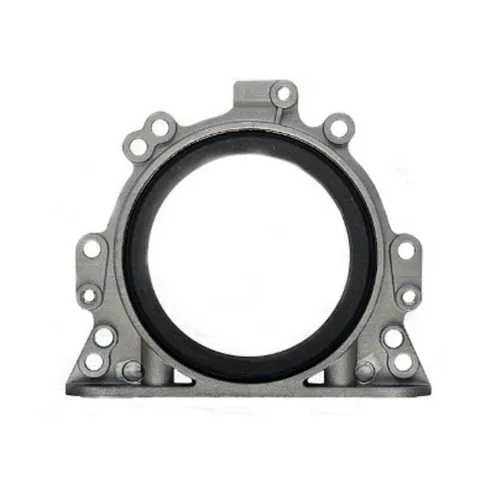A Complete Guide to VW Crankshaft Seals: Types, Symptoms, and Replacement Tips
Volkswagen engines are known for their reliability, but even they depend on properly functioning seals to maintain peak performance. One of the most critical components in any VW engine is the crankshaft seal, which prevents oil leaks and protects engine internals from contamination. This article focuses on understanding and servicing VW crankshaft seal components, including models like the VW Polo BAH rear main seal, the VW Polo crankshaft oil seal, and the VW T4 crankshaft oil seal.

The Role of the VW Crank Seal in Engine Health
The VW crank seal also called a crankshaft oil seal, is located at either end of the crankshaft—front (behind the crank pulley) and rear (next to the flywheel or flexplate). Its job is to keep engine oil from leaking out of the crankcase while allowing the crankshaft to spin at high speed.
Volkswagen uses various crank seal designs across its model range, but they typically include:
A rubber or PTFE sealing lip
A metal or plastic housing for structural support
Spring tension (in older designs) or advanced sealing surfaces in newer models
A damaged or worn VW crankshaft seal can lead to:
Engine oil leaks
Low oil pressure
Engine bay contamination
Premature clutch or timing belt failure (if oil spreads)
Replacing a leaking VW crank seal early can prevent costly damage and keep your engine running smoothly.
Common Issues with the VW Polo BAH Rear Main Seal
The VW Polo BAH rear main seal is a specific component used in the 1.2L BAH engine found in various VW Polo models. This seal sits at the rear of the engine, where the crankshaft exits the block to connect to the gearbox. It is one of the most failure-prone seals in this model due to oil pressure, heat, and wear.
Symptoms of a failing VW Polo BAH rear main seal include:
Oil leaks between the engine and transmission
Slipping clutch (due to oil contamination)
Visible oil stains under the vehicle
Increased oil consumption without visible smoke
Replacing this seal often requires removing the gearbox, which is labor-intensive. However, it is essential to do it right, preferably with an OEM or high-quality aftermarket part that ensures long-term sealing performance.
Diagnosing and Replacing the VW Polo Crankshaft Oil Seal and VW T4 Crankshaft Oil Seal
The VW Polo crankshaft oil seal at the front of the engine (timing side) is also critical. It prevents oil from leaking into the timing belt area, where it could cause the belt to slip or degrade prematurely. Front crank seals are more accessible than rear seals and are often replaced along with timing belt service.
Likewise, the VW T4 crankshaft oil seal (used in VW Transporter T4 vans) can be found in both petrol and diesel versions. These seals are prone to wear, especially in high-mileage or heavily loaded vans.
Signs of a worn VW Polo crankshaft oil seal or VW T4 crankshaft oil seal:
Oil dripping from the crank pulley area
Contamination on timing belt or serpentine belt
Burning oil smell
Engine warning light due to oil pressure issues
Replacement tips:
Use manufacturer-recommended tools for seal installation to avoid misalignment.
Always clean the crankshaft sealing surface before fitting the new seal.
If replacing the front crank seal, consider changing the timing belt, tensioner, and water pump at the same time.
For rear seals, inspect the flywheel or flexplate and rear main bearing while you're in there.
Proper installation ensures a tight fit and long-lasting performance for your VW crankshaft seal, whether on a Polo or T4 model.
Though small in size, the VW crank seal is a key component that protects the integrity of your engine. Whether you're dealing with the VW crankshaft seal at the front, the VW Polo BAH rear main seal, the VW Polo crankshaft oil seal, or the VW T4 crankshaft oil seal, knowing the symptoms of failure and replacement procedures can save you from serious mechanical issues.
Keep an eye out for leaks, and don’t ignore early signs. Replacing a faulty crankshaft seal in time is a smart move that preserves performance, fuel economy, and engine longevity.
-
Seal 12x20x5: Precision Radial Shaft Seals for Industrial Reliability
Novas Nov.24,2025
-
Seal 12x18x5: Essential Guide to Specifications, Applications & Vendors
Novas Nov.24,2025
-
Understanding Seal 12 20 5: Applications, Specifications & Industry Insights
Novas Nov.23,2025
-
Durable Oil Seal 85x110x12 – Reliable Sealing Solutions for Industry
Novas Nov.23,2025
-
Durable and Precise Oil Seal 75x95x10 for Efficient Machinery | YJM Seal
Novas Nov.22,2025
-
Durable Oil Seal 75x100x10 for Reliable Industrial Performance | YJM Seal
Novas Nov.22,2025
-
High-Quality Oil Seal 65x90x10 | Durable & Reliable Sealing Solutions
Novas Nov.22,2025
Categorías de produtos















